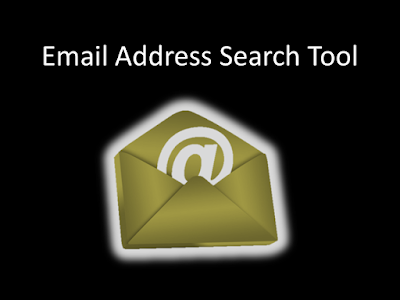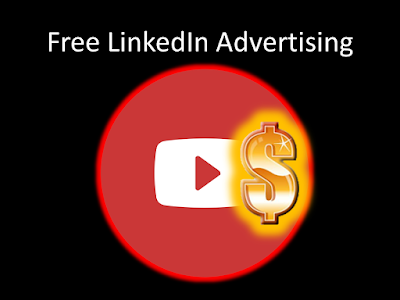I have been meaning to get around to write a post about how much I detest pop-ups, obscuring email capture forms and those adverts with a count down before you get to content.
Using shares of blogs to social media which when you click you get something else has a name. It is an ugly one.
It is called click baiting.
I don't know about you, but I hate being tricked. I loathe companies who treat me as an idiot.
The reason I have been gearing up to write something on this is because I had been sent articles written on Forbes recently. I never read the entire content of these posts, because Forbes seems to have gone mad on this stuff. To such an extent that it is too painful to even get to the content.
I think this is a major mistake and reflects very badly on the website. I also know from personal experience that this means even though the audience numbers are large, they are both dramatically reducing the visibility of their contributors, but also p***ing a lot off enough never to return.
Well, great minds think alike and this morning my colleague
+Neil Patrick sent me an article he had written on the fly in irritation due to similar encounters with the pop-up kind. He asked if I would like to post it here on my blog. As I absolutely agree with what he writes, I absolutely said yes. Here it is in full:
"Like all of us I spend a lot of time working online. And if there is one thing guaranteed to p**s me off, it is
pop-ups. They deserve a strapline like: “Annoying people online since 1992”. I surf around and just when I think have found what I am
looking for;
BANG!
Up it comes. The instruction (for this is how such things
are usually presented) to sign up for emails, FREE information, donate to this charity,
register for more. Etc. etc. My screen is locked and I cannot do a thing until I find the
often cunningly hidden X or cancel button on the pop-up box. My attitude towards the site owner is immediately transformed.
And not for the better. I was interested in your site. Now I am not. Almost certainly, I leave and look elsewhere.
And probably never come back.
Ad blocking software helps of-course. And it’s becoming
popular with over 28% of the US population using just one of the most popular blockers,
Ad-Block Plus. This is now over 150 million users, up from ‘just’ 54 million in
2013. Even Google has finally conceded that pop-ups have become a
problem and is attempting to turn the problem into a revenue source. Its
Contributor program
provides ad-free navigation for a fee ranging from $1 to $3 per month.
You’d think these facts alone would send a clear enough
signal to businesses that people really, REALLY don’t want advertising to get
in the way of their online activity. Yet they persist, with many reputable brands clinging to
them like a life raft. The Financial Times, the New York Post and The Economist,
all eminent high quality information providers, let us view a couple of articles,
before we are blocked by a pop-up, demanding that we either register for junk email
or pay for a subscription.
As hugely respected publishers with a reputation going back
for decades, they really should know better. These are premium brands after all,
not jumped up wannabees. Apart from the slow
brand suicide they are engaged in, they also send a signal to the less worthy,
that it’s a good idea to do this.
Well I’m going to say it plainly. NO it’s not OK! It’s not
big and it’s not clever. In fact it’s very, very stupid.
At this point I can hear a rising clamour from marketing
people all shaking their heads and muttering, “Rubbish! We have DATA that
proves these tactics work. The ROI proves it. We’re running a business not a
charity, you dumb**s!” I know you are running a business. And I know you have to
make a profit. And I know that the internet has forced you to devise new
business models, to counter the deluge of free online content competing for
your audiences’ attention.
But by persisting with this tactic, you are killing yourself
by a thousand cuts. Here’s why.
The social web has changed everything. I call it the
democratization of media. The old media world, worked top down, just like the
old industrial age. Owners, provided money to management to grow their businesses.
Management hired agencies to craft advertising, and media owners sold space for
that advertising. The ads generated business and the merry go round continued,
with everyone making money. Year after year.
The social web works differently. One of the reasons it is
taking over from old media, is that it allows users to choose what they want to
consume, when, from whom and how much. It’s not called the information
superhighway for nothing. Pop-ups are like a toll booth on the superhighway. Provide
your ID and pay up or go no further. And sure enough more often than not, I stop and return from
whence I came.
In my post
here,
I expressed a view that on LinkedIn people want control and they want the
freedom to choose what they do online and how they do it. They don’t want to be
pestered by you, me, or anyone else to do this or that. They want control. But
I think this isn’t just true for LinkedIn, its true across the web. People want and value freedom of speech. Freedom from
intrusion. Freedom to choose. Pop-ups are the antithesis of this idea. They exist not to
help us do what we want to do; they seek to control and force us to do what the
site owner wants us to do. It’s crude, it’s disrespectful and it matters not a bit
whether it’s relevant, targeted, or whatever other marketing pseudoscience you
want to label it with.
It is a relic of the old top-down command and control
approach to marketing.
There IS a Better Way
It’s not unusual for my new clients to be addicted to
pop-ups. They have often convinced themselves, that although the impacts are
small, because it’s almost free and a few people will sign up every month, it’s
doing okay for their business. They can only see upsides, and sometimes out of sheer desperation
have convinced themselves that whilst not great, this is better than total
surrender.
They think they are slowly but steadily building a list of
eager prospective consumers hungry for more. Except they are not. More likely
they are building a list of competitors wanting to spy on them, salespeople
wanting to pitch something at them, or people who are cleverly bypassing the
system completely by providing them with an email address they never use except
for receiving the stuff they never want to look at. A bin in other words.
So I have to ween them off this addiction, before we can do
anything else. A simple example will suffice. To their credit, one of my
clients has never used pop-ups. However, they do provide an option on their home page where if you choose, you can register for emails with future special offers.
No pressure, no obligation. And despite not being a large or long established
business, thousands of people have freely provided their email addresses and
REQUESTED emails.
The leap of faith has been made. My client will send you
only what you ask for. And it works.
An email was sent to this subscriber base last week. The
open rate was over 30%. Over 3% of the opened emails placed an order. It’s consensual marketing not command and control marketing.
It’s not advertising. It’s an ongoing dialogue between a
company and its customers. Anytime someone wishes they can opt out. But few
ever do. There are plenty who will tell you that email marketing
doesn’t work. Well it will and it won’t. If you have a subscriber list of
people who have CHOSEN freely to receive your emails, and you send them things
they are genuinely interested in, it will work. If you have acquired your list
by force, deceit or spurious targeting criteria, it won’t. Ever.
Especially if it all started with a pop-up."
 Here's a technique I created which uses Google Advanced Search as a tool. This method can help you find email addresses of business contacts quickly.
Here's a technique I created which uses Google Advanced Search as a tool. This method can help you find email addresses of business contacts quickly.






























